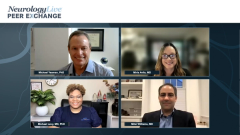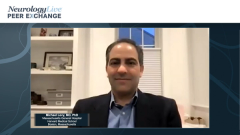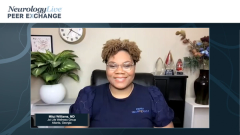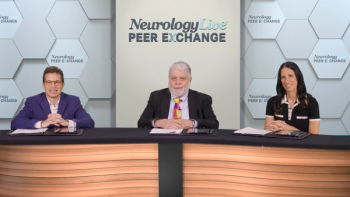
Pathogenesis of NMOSD
Drs Mitzi Williams, Mirla Avila, and Michael Levy comment on the differences in pathogenesis in various patient populations affected by NMOSD as it relates to genetics, comorbidities, and immune tolerance.
Episodes in this series

Michael Yeaman, PhD: Related to differences in incidence, prevalence, disease course, and severity are factors involving pathogenesis, in particular immunologic programming and HLA types. Mitzi, maybe I could ask you to get us started on differences in pathogenesis that you’ve noticed or that you might want to comment on in different populations affected by NMOSD [neuromyelitis optica spectrum disorders].
Mitzi Williams, MD: When we think about genetics, particularly for demyelinating disease, in some cases, there certainly have been different genes identified in the Black or African descent population, but we haven’t seen very much in terms of what that means in a clinical sense. When we see certain populations, particularly the Black population, we certainly tend to see worse outcomes clinically in terms of more disability progression. But there’s a big question about how much of that is related more to genetics vs how much of that is related more to social determinants of health, and I don’t think that we have the answer to that question. We know that there are worse clinical outcomes, but we still have a lot of work to do to understand the genetic components that may be contributing to that and how much that may be affecting clinical outcomes.
Michael Yeaman, PhD: Excellent point. Mirla, similarly, we know that there can be not only genetic differences and socioeconomic and other differences that we’ll talk about in just a moment, but there also can be comorbidities that can impose themselves on top of NMOSD in some populations. Would you like to comment on that?
Mirla Avila, MD: Yes. Besides the comorbidities that could come with age, because these are older populations, or with the genetics of the group, we also see that patients with NMOSD have a higher incidence of other autoimmune diseases, including lupus, myasthenia, and Sjogren syndrome, so it isn’t uncommon for patients to have at least 2 or more autoimmune diseases. That will add more complications to the treatment of these patients.
Michael Yeaman, PhD: That sounds great. Michael, maybe we could ask you to provide a few thoughts with respect to some of the processes in pathogenesis and how it revolves around immune tolerance.
Michael Levy, MD, PhD: For one thing, we’ve been looking at the biological basis of this race difference, and we’ve homed in on some different immunological pathways that we think might be important, such as the complement system. In some populations, complement may be important in managing diseases like meningitis but can also predispose to autoimmunity. For example, genetic studies in both lupus and NMO [neuromyelitis optica] have revealed disruptions in complement gene levels. We’ve been looking at that in the laboratory, and we think it can play a role far upstream before complement causes any damage. It can modify the immune response and probably contribute to that break in tolerance to aquaporin-4 and lead to production of antibodies.
As we keep looking into that, there’s going to be a component of race included in that because complement is so important in preventing meningitis in parts of Africa, especially in the meningitis belt. That may be the basis of it. It could be protective in some populations and maybe a contributor to disease in other populations.
Michael Yeaman, PhD: Really interesting stuff. We’ve covered a lot of the basic concepts. Before we leave this topic, maybe I could ask for a quick 1-sentence response. Mirla, is anti–aquaporin-4 sufficient to cause disease, or are T cells as much or more of the factors that are causative than antibody?
Mirla Avila, MD: I don’t know if we have a clear answer for that because we know there’s production of aquaporin-4 antibodies, but we also know that there’s activation of T cells. Which one is coming first? I don’t know if we have the answer. We were talking about complement. We know that with NMO, complement is also activated. We still need more studies to decipher which starts it or whether the antibodies are a consequence of the initial target.
Michael Yeaman, PhD: Mitzi, what are your thoughts on this particular question?
Mitzi Williams, MD: I agree with Mirla that there’s complexity there. I don’t know which came first, the chicken or the egg, the antibodies or the T cells, but it’s very encouraging that we have an antibody that we can test and we have a target. This is huge. The discovery of the aquaporin-4 antibody was huge in terms of allowing us to not only diagnostically be able to identify these patients and separate them from people with MS [multiple sclerosis] but to try to better understand the complexity of the disease and the pathogenesis.
Michael Yeaman, PhD: Mitzi, thank you so much. Michael, maybe we could get your quick thought about antibodies and T cells.
Michael Levy, MD, PhD: In our hands in the laboratory, we’ve been working on trying to understand the order of events. We believe T cells are important very early in the disease, in the break of tolerance, and in inducing the rest of the immune system to mount an attack on aquaporin-4. We think it’s involved in almost every step of the process. Those T cells are probably very important.
Transcript Edited for Clarity
Newsletter
Keep your finger on the pulse of neurology—subscribe to NeurologyLive for expert interviews, new data, and breakthrough treatment updates.




































